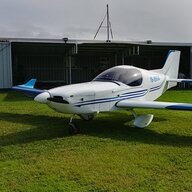-
Posts
4,794 -
Joined
-
Last visited
-
Days Won
139

kgwilson replied to Garfly's topic in AUS/NZ General Discussion

kgwilson replied to danny_galaga's topic in Instruments, Radios and Electronics

kgwilson replied to danny_galaga's topic in Instruments, Radios and Electronics

kgwilson replied to red750's topic in Aircraft Incidents and Accidents

kgwilson replied to red750's topic in Aircraft Incidents and Accidents

kgwilson replied to danny_galaga's topic in Instruments, Radios and Electronics

kgwilson replied to danny_galaga's topic in Instruments, Radios and Electronics

kgwilson replied to danny_galaga's topic in Instruments, Radios and Electronics

kgwilson replied to danny_galaga's topic in Instruments, Radios and Electronics

kgwilson replied to red750's topic in Aircraft Incidents and Accidents

kgwilson replied to danny_galaga's topic in Instruments, Radios and Electronics

kgwilson replied to danny_galaga's topic in Instruments, Radios and Electronics

kgwilson replied to red750's topic in Aircraft Incidents and Accidents

